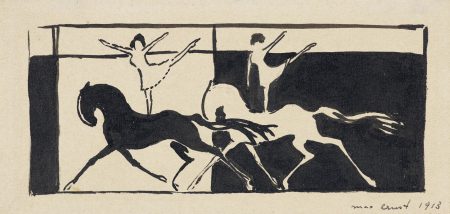More questions than answers
The Musée d’Orsay has a particular fondness for Edgar Degas (1834-1917). We can understand why. He is one of the geniuses of modernity. However the last exhibition on him, “Degas à l’Opéra”, only dates from 2019. But Edouard Manet (1832-1883), a painter just as extraordinary but who’s also immensely complex, is less fussed over by the French institution. This is why the museum’s new large-scale exhibition, “Manet/Degas”, comprising two hundred artworks until 23 July, raises more questions than it answers.
Manet’s project
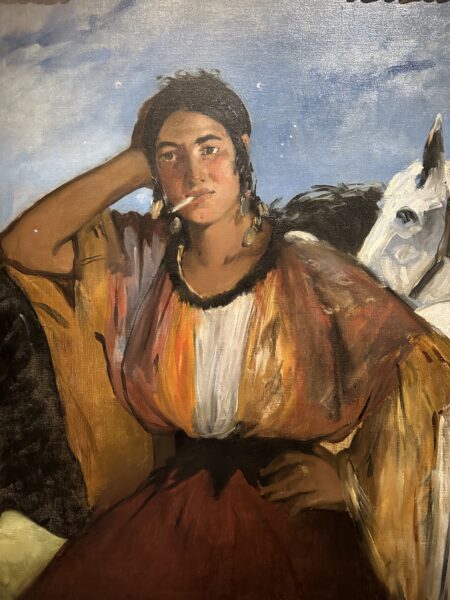
Edouard Manet
It lacks certain keys to understanding the nature of Manet’s project – he was constantly changing his style – whilst the general concept is oriented towards the comparison of both careers. But don’t let this ruin our pleasure: here we are able to see absolute masterpieces of art history.
Isolde Pludermarcher
Isolde Pludermacher, co-curator of the exhibition, explains: “their respective circles interfered with their creations. And through looking at each other’s work they opened up new inroads, each in their own way, to modernity. But many things about their relations remain unknown.”
He died of syphilis
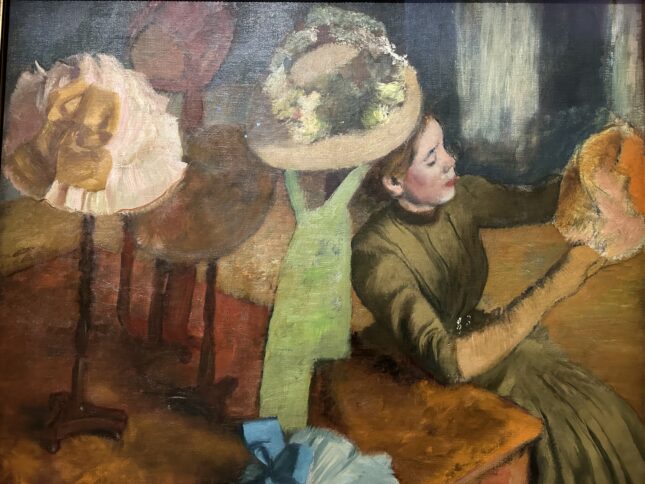
Edgar Degas
They didn’t maintain any real common correspondence. And Manet never painted Degas. The latter, on the contrary, not only depicted his contemporary in a painting, a dozen drawings and three etchings, but also on his death – Manet died of syphilis at the age of 51 – he religiously collected his works.
Tortured relationship

Edgar Degas
The exhibition opens with a damaged painting which serves as a sign of their tortured relationship. It was made by Degas and originally depicted “Monsieur and Madame Manet”. Edouard must have been very dissatisfied with the canvas since he took it upon himself to cut it up and throw away a quarter of it, the part showing his wife playing the piano. We don’t know the reason behind this violent gesture.
Bourgeois
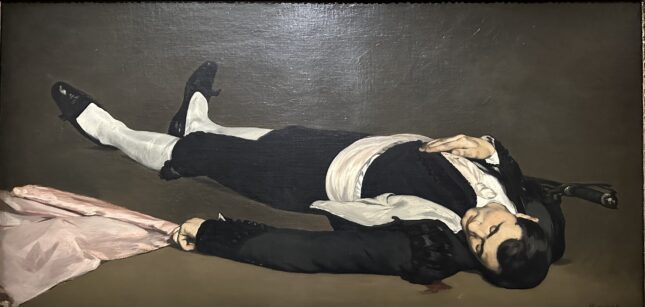
Edouard Manet
The two men came from similar backgrounds. They were both from bourgeois Parisian families. They worshipped the old masters, and legend has it that they met at the Louvre in front of a Velazquez painting. Both of them made studies copying their elders so as to better cut loose later from the academy. But it was Manet, free, fiery and provocative, who rose more rapidly to fame.
Nude sitting on the grass
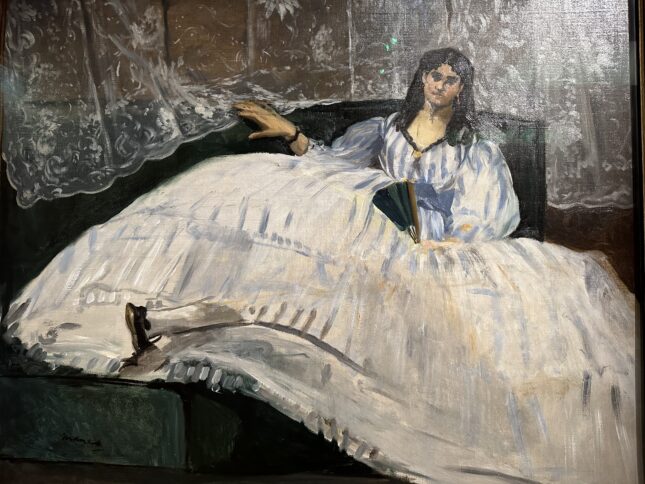
Edouard Manet
He painted the nude woman sitting on the grass surrounded by clothed men, Olympia, which caused a huge scandal. Around 1860 he was a star painter, while Degas was unknown outside of his circle. The exhibition puts the large-scale “Portrait de famille” from 1858-1859 by Degas, which is very carefully painted and relatively austere, despite the sumptuous blue background, against Manet’s Balcon from 1869, a powerful and spontaneous scene as a depiction of society.
The gulf that separate them

Edouard Manet
Here we understand the gulf that separated them. While they both had a fondness for certain places, such as the races, which lent itself to the depiction of crowds and horses, their approaches to women, for example, were very different. The first, who was happily married, presents figures of modern, spontaneous and often elegant women. The other, who had a secretive private life, seems instead to have tortured his models to represent them in motion.
Manet’s la prune/ Degas’ L’Absinthe
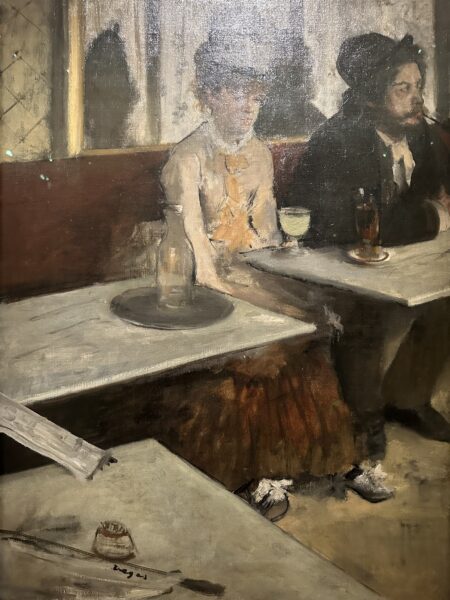
Edgar Degas
Manet’s “La prune” shows a pretty, graceful girl sitting at a table, just holding a cigarette, whereas “Dans un café” by Degas depicts a woman who looks gangly, worn out by alcohol.
L’exécution de Maximilien
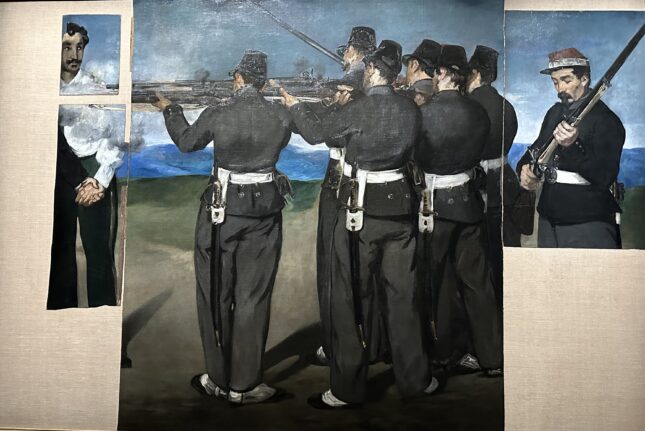
Edouard Manet
Around 1868 Manet painted one of his most famous paintings four times: “L’exécution de Maximilien”. Inspired by Goya, it depicts a chiaroscuro scene of a real event: soldiers taking aim at the Emperor of Mexico. None of these versions belong to a French museum today. When the painter died, since the subject was controversial, it seemed his heirs cut one of them up to sell it in pieces.
Puzzle of a painting
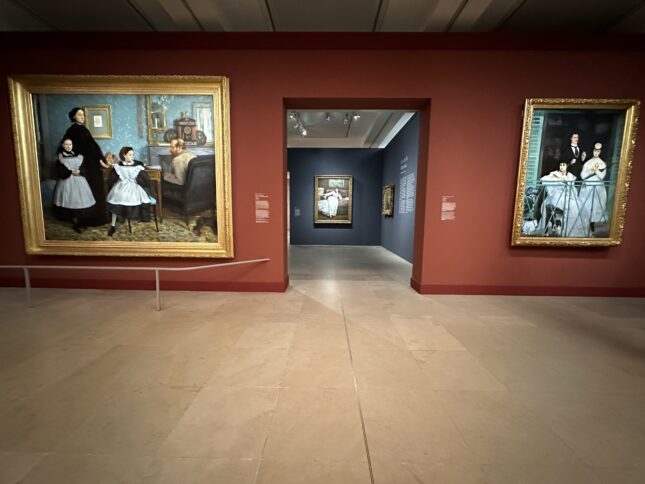
Degas/ Manet
And it was Edgar Degas himself who tried to put this puzzle back together, not without difficulty. Clearly outraged by the mutilation of an admirable artwork, he assembled four of the main pieces of the composition on a canvas. While it can normally be found in London, at the National Gallery, this well-proven version is on view in Paris until 23 July, as the ultimate testament to the admiration Edgar felt for Edouard.
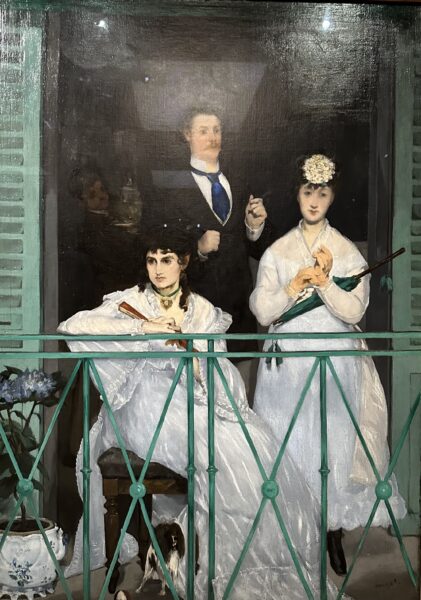
Edouard Manet
Manet/Degas. Musée d’Orsay. Until 23 July. www.musee-orsay.fr/fr
From 24th September in New York at the Metropolitan Museum https://www.metmuseum.org/exhibitions/manet-degas
Support independent news on art.
Your contribution : Make a monthly commitment to support JB Reports or a one off contribution as and when you feel like it. Choose the option that suits you best.
Need to cancel a recurring donation? Please go here.
The donation is considered to be a subscription for a fee set by the donor and for a duration also set by the donor.



